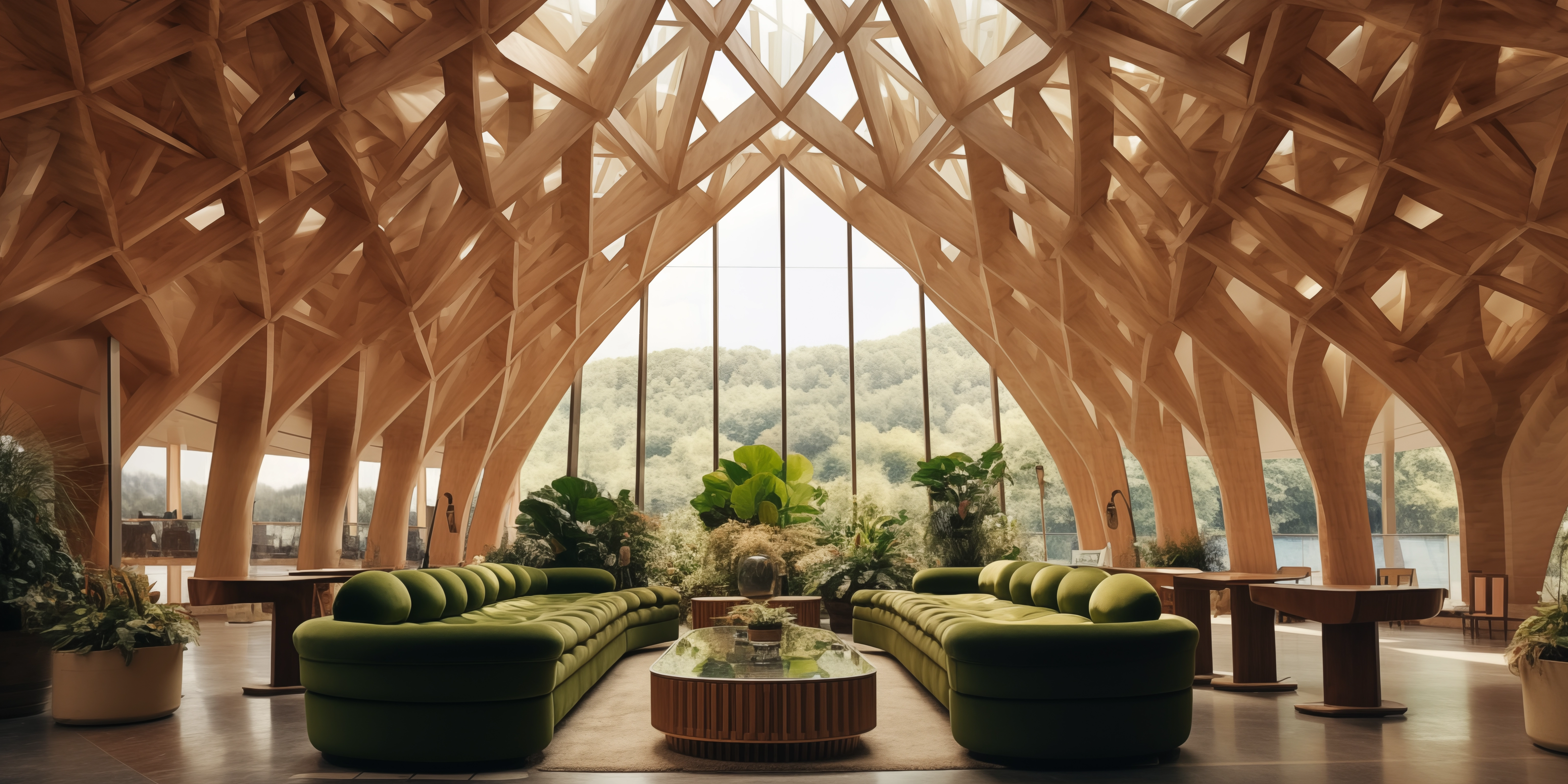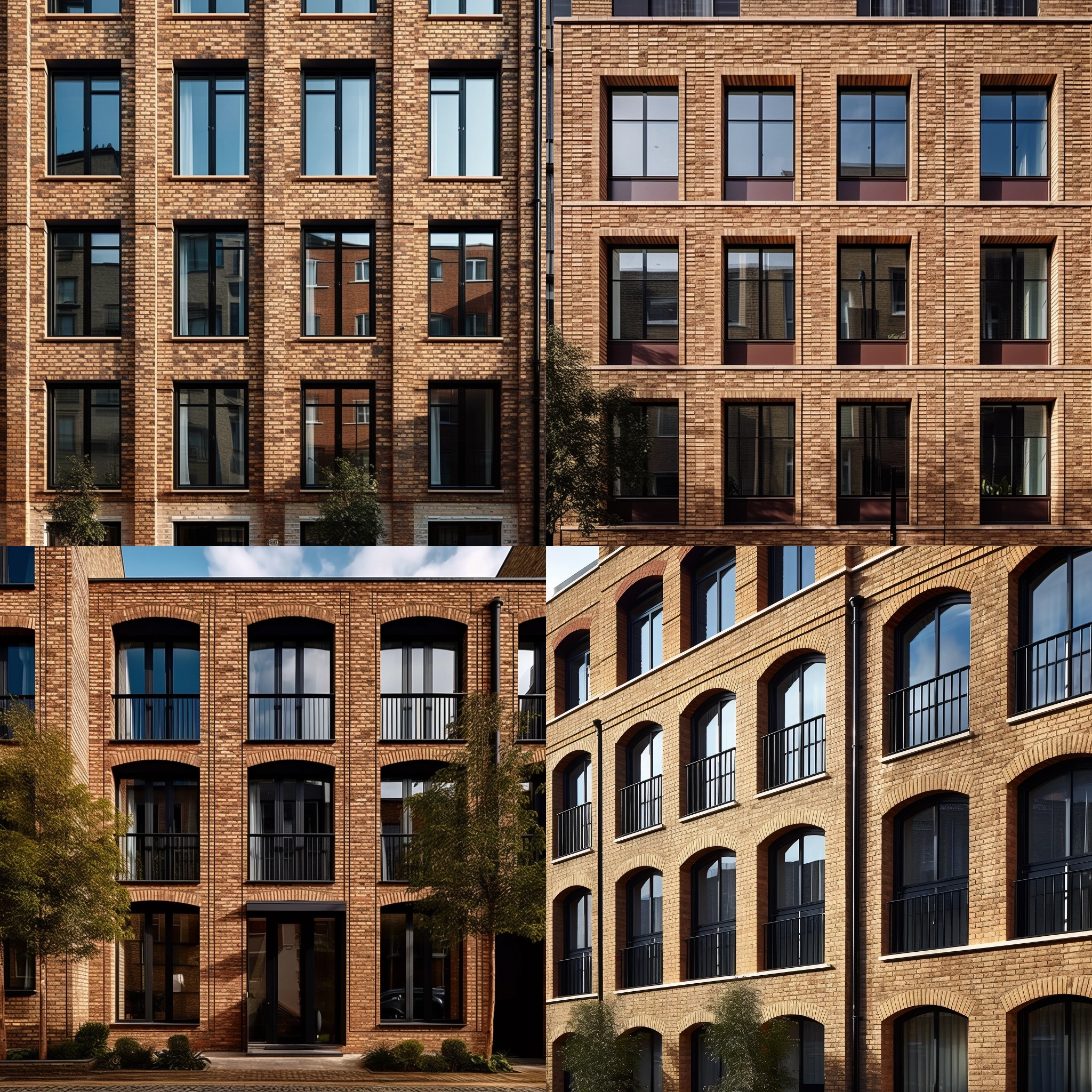Artificial intelligence (AI) is not only a buzzword in the tech industry, it's a powerful force that is certain to disrupt many traditional roles, including architecture. The subject is vast, and awareness has grown exponentially since the first release of ChatGPT in late 2022. In this blog post, we will explore some of the applications of AI for design exploration, performance optimisation, and creative expression.

Jump to:
AI for Design Exploration
One of the most exciting applications of AI in architecture is generative design. AI uses machine learning algorithms to instantaneously generate multiple design options based on predefined criteria and constraints.
Generative design can help us explore a vast design space, discover novel solutions, and optimise our designs for various factors, such as aesthetics, functionality, sustainability, and cost.
Some of the tools that we use or have tried are
Delve by Google: A Google product that uses generative design to create optimal solutions for a given site and program. Delve can generate thousands of design options and evaluate them based on multiple criteria, such as sustainability, cost, and user satisfaction.
At its list price of 50K per license, it looks to be targeted at replacing the traditional role of the architect, and we can't say we've stumpt up for the licence to explore it, but it looks promising.
Laiout by Spacemaker: A web-based tool that automates the space planning of offices, based on the user’s input of program, area, and preferences. Laiout can generate multiple layout options that meet the user’s requirements and provide feedback on their quality and performance. The platform charges per square meter and at the moment it relies on some manual input by the developers. We're keen to use this one in anger.
Parallelo by Archistar: A web-based tool that uses AI to generate compliant and feasible apartment layouts, based on the user’s input of site, zoning, and design parameters. Parallelo can produce hundreds of layout options in minutes and provide analysis on their floor area, efficiency, and daylight.
AI for Performance Optimisation
Performance optimisation uses AI to analyse and improve the environmental and structural performance of buildings which can help us design buildings that are more energy-efficient, comfortable, resilient, and safe in a fraction of the time.
We've tried the following:
Forma by Autodesk: A cloud-based platform that uses AI to simulate and optimise the wind and daylight performance of large-scale urban projects. Forma can help architects design buildings that maximise natural ventilation, daylight, and views, while minimising wind loads and energy consumption.
Preoptima by Bionova: A web-based tool that uses AI to calculate and optimise the life cycle assessment (LCA) and embodied carbon of building designs. Preoptima can help architects design buildings that minimise their environmental impact and comply with green building standards.
AI for Creative Expression
Creative expression is an area that many thought impossible for computers to emulate. AI is used to generate and manipulate images, videos, and sounds that can inspire and communicate architectural ideas.
We use Midjourney, Prome AI, and Stable Diffusion to help unleash our imagination, experiment with different styles and forms, and create engaging and immersive presentations.
Some of the best tools are:
Promeai by Prome.ai: A web-based tool that uses AI to generate photorealistic images of architectural designs, based on the user’s input of sketches, photos, or 3D models. Promeai can help architects visualize their ideas in realistic contexts and scenarios, and enhance them with post-production effects.
Diffusion by Stable: A web-based tool that uses AI to blend sketches and photos into seamless and artistic images, based on the user’s input of pixel dimensions and checkpoint model. Diffusion can help architects create expressive and unique images that combine the hand-drawn and the photographic.
Here are some wild examples that have come out of our experiments with Creative Expression tools so far - stay tuned for a blog on how they were made:
AI for Everything Else
AI is not only a powerful ally for design, but also for other aspects of architectural practice. In fact, this is where we started and where we get most use of AI tools in our day to day work.
There are plenty of platforms to choose from the usual suspects:
And here's what Bing Chat gave us as the Pros and Cons of each (You'll notice Bing is built on ChatGPT - but at the time of writing OpenAI had restricted access to GPT4 and Bing's a good workaround to get free access) ... (note - nothings free - they're gobbling up your data so be careful with sensitive information, but that's another blog post entirely)
AI Chatbot | Pros | Cons |
|
| |
|
| |
|
|
You'll also find all of these linked through APIs into almost every bit of software you use now.
We find AI chat bots great for:
RFI + ITT Responses:
One of the first and most famous AI tools on the market is Chat GPT, which we use to answer requests for information from clients or contractors. It can scan documents or databases, extract relevant information, and generate clear and accurate responses. Of course, we always double-check the results and tweak the language, which can be repetitive and full of hyperbole, but it saves us a lot of time and effort by analyzing, compressing, and reformatting large amounts of data.
Reviewing Long Reports:
AI can also help us review long reports or documents, such as feasibility studies or technical specifications. It can summarise the main points, highlight the key findings, and identify any errors or inconsistencies. This way, we can quickly get an overview of the content and focus on the most important or problematic parts.
Research Data and Comparison Table:
AI can also help us conduct research on topics related to our projects, such as market trends, best practices, or case studies. It can collect data from various sources, analyse them, and present them in a comparison table. This way, we can easily compare and contrast different options and make informed decisions.
Presentations
Beautiful.ai is a great platform to quickly bring together presentation material and generate slides automatically with smart templates and themes. It has some built in AI functionality that allows it to create diagrams and icons from web data or information you feed into it.
Conclusion
AI is a game-changer for the field of architecture, as it can offer new ways of designing, optimising, and presenting buildings. However, it is not yet a replacement for human creativity and judgment, but rather a complement and a catalyst.
As Keir-Reagan Alexander of Arka-Works, a leading AI consultancy for architecture, said in a recent workshop that we attended:
“Competency won’t be something you can sell. You will need to offer something more: vision, value, and impact.”
We at Holt Architecture are always looking for new tools and technologies that can help us deliver better designs and services to our clients. That’s why we are constantly exploring and experimenting with AI, and learning from the best in the industry.
If you are interested in learning more about how we use AI in our projects, or if you have any questions or comments, please feel free to contact us. We would love to hear from you.














































Comments